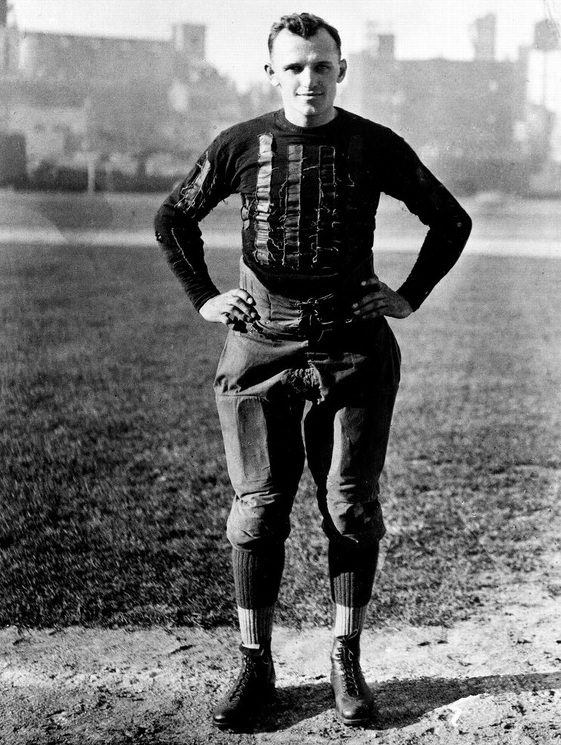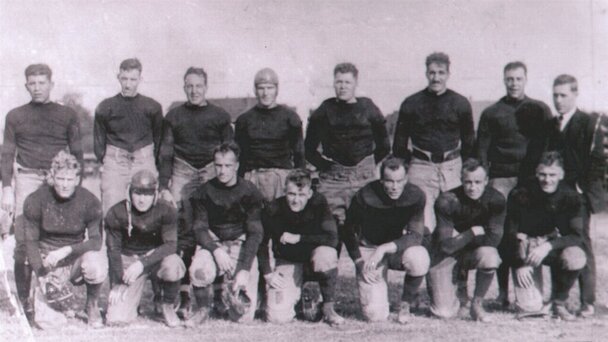
Team photo featuring the Buffalo All-Americans during the 1921 season.
John Steffenhagen & Leo Lyons collection
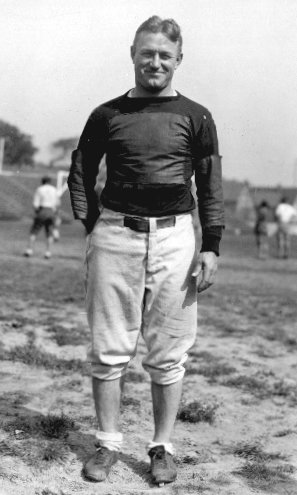
Luke Urban played end for the Buffalo All-Americans from 1921 until 1924.
Canisius College, J. Clayton Murray Archives
Ever wonder why the National Football League Hall of Fame is located in Canton, OH? Well, it’s because the American Professional Football Association—the forerunner of the NFL—was founded on August 20, 1920, in an automobile dealership in Canton. The APFA started with 14 franchises, and Barney Lepper teamed up with Tommy Hughitt to form one of them—the Buffalo All-Americans.
Buffalo’s original professional football franchise started strong, finishing the 1920 season in third place with a 9-1-1 record. The team took its name from the fact that it had many college All-Americans dotting the roster, including Swede Youngstrom, Ockie Anderson, Heinie Miller, Murray Shelton and Lou Little. The All-Americans had a tremendous second season as well, and laid claim to the title of APFA champions in 1921 with a 9-0-2 record. However, in a series of events that have gone down in the annals of Buffalo sports history as the “Staley Swindle,” the championship ended up being awarded to the Chicago Staleys.
Chicago’s professional football team had recently started as the Decatur Staleys, named for Decatur soybean entrepreneur A. E. Staley and his company, which provided the team’s original players. A.E. Staley brought on a former University of Illinois football star, George Halas, to play for his team, as well as coach. Following the 1920 season, Staley struck a deal with Halas to take over the team and move it north to Chicago, where they would play their games in Cubs Park (Wrigley Field). The deal called for the team to retain the Staley name for one year.
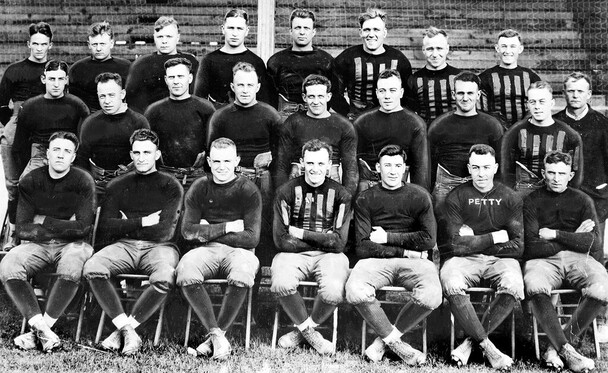
The 1920 Decatur Staleys. Player and coach, George Halas, is seated in the center of the front row.
Decatur Public Library
Following their move upstate, the Staleys finished what would today probably be considered the “regular” 1921 season in second place—their only loss coming to Buffalo in the Chicago team’s only road game, played on Thanksgiving Day. But Chicago owner and player, George Halas, challenged then-Buffalo owner Frank McNeil to a rematch of the earlier game, this one to be played in Cubs Park. McNeil agreed, with the stipulation that the game was to be considered a “post-season” exhibition game, and not to count in the final league standings. This second game was played on December 4, only a day after Buffalo had chalked up a home victory against the Akron Pros. Though the game was tied into the third quarter, Chicago emerged victorious by a score of 10-7.
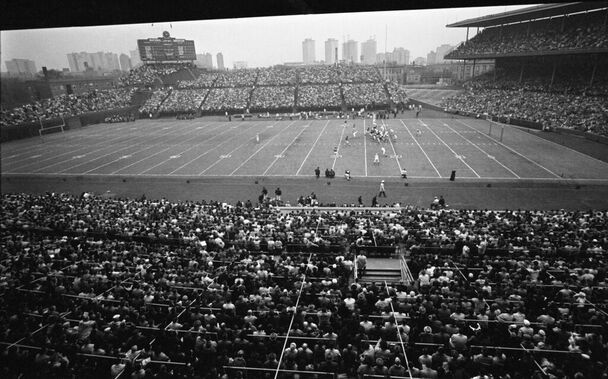
From 1921 until 1970, the Chicago Staleys/Bears played their home games in Cubs Park, which would be renamed Wrigley Field in 1927.
Private collection
Halas began to lobby the Association on behalf of the Staleys’ claim to the title, arguing that when two teams played more than one game in a season, the second of the two games should carry more weight. He also cited the fact that the combined score of the two head-to-head games favored Chicago, 16-14. McNeil, of course, continued to argue that the game was only an exhibition and thus had no bearing on the title. Halas countered with the argument that no game should be considered as “post-season,” since the Association had established no ending date for the season at that time.
In the end, the league determined that the game played on December 4 between the Staleys and Buffalo counted as a regular season game and would indeed count more than the Thanksgiving Day game the All-Americans had won. Therefore, the Staleys were awarded the APFA Championship by executive decision, and Frank McNeil was left to dispute the title for the remainder of his life, to no avail.
In 1922, the APFA was renamed the National Football League and the Staleys were renamed the Chicago Bears, an homage to the Chicago baseball team, whose park they shared (and a name that made sense, since football players were typically larger than baseball players). The Buffalo franchise, meanwhile, would never again gain match the level of success achieved in those inaugural seasons. The team went 6-4-1 in 1922 and 5-5-3 in 1923.
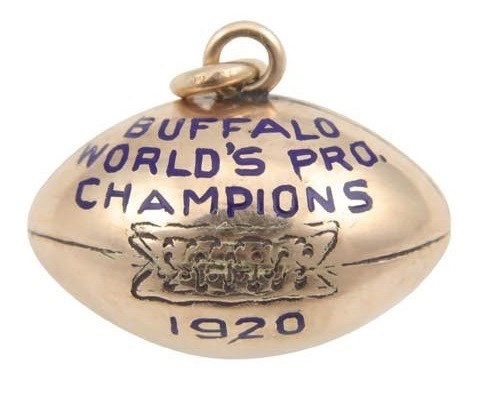
Buffalo All-American football fob, proclaiming the team as the 1920 world champions. Like the 2021 season, this championship is also in doubt, as, due to the teams' unbalanced schedules, the championship was, that year, determined by vote-- and given to the Akron Pros. Only three of these fobs are known to exist, this one bearing the name of left half back Oscar C. ("Ockie") Anderson on the back.
Private collection
Following the 1923 season, the team changed its name to the Bisons and played under that moniker in 1924 and 1925. Another name change came the following year, and the franchise played a single season as the Rangers in 1926 but returned to the Bisons name in 1927 and 1929. They did not play in 1928. By the end of the 1929 season, the Great Depression created hardships for professional sports as well as the common man. The franchise had run out of money and time—and quickly folded. A Buffalo team would not return to the NFL until the Buffalo Bills joined the rest of the American Football League in the 1970 merger with the former organization.
Want more great stories of Buffalo’s professional sports history? Then check out Makers, Moments & Memorabilia, our collaborative publication with the Buffalo History Museum!
